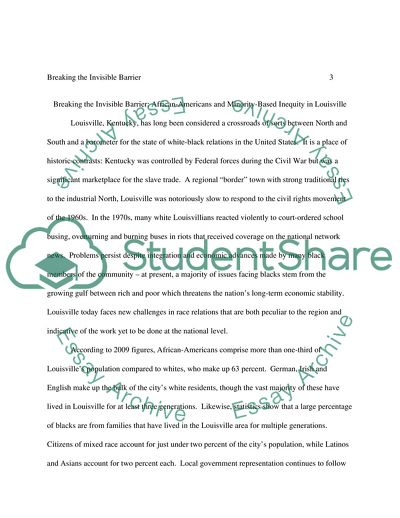Cite this document
(African Americans and Minority-Based Inequity in Louisville Case Study Example | Topics and Well Written Essays - 1500 words, n.d.)
African Americans and Minority-Based Inequity in Louisville Case Study Example | Topics and Well Written Essays - 1500 words. https://studentshare.org/sociology/1755523-race-and-your-community-research-paper
African Americans and Minority-Based Inequity in Louisville Case Study Example | Topics and Well Written Essays - 1500 words. https://studentshare.org/sociology/1755523-race-and-your-community-research-paper
(African Americans and Minority-Based Inequity in Louisville Case Study Example | Topics and Well Written Essays - 1500 Words)
African Americans and Minority-Based Inequity in Louisville Case Study Example | Topics and Well Written Essays - 1500 Words. https://studentshare.org/sociology/1755523-race-and-your-community-research-paper.
African Americans and Minority-Based Inequity in Louisville Case Study Example | Topics and Well Written Essays - 1500 Words. https://studentshare.org/sociology/1755523-race-and-your-community-research-paper.
“African Americans and Minority-Based Inequity in Louisville Case Study Example | Topics and Well Written Essays - 1500 Words”. https://studentshare.org/sociology/1755523-race-and-your-community-research-paper.


